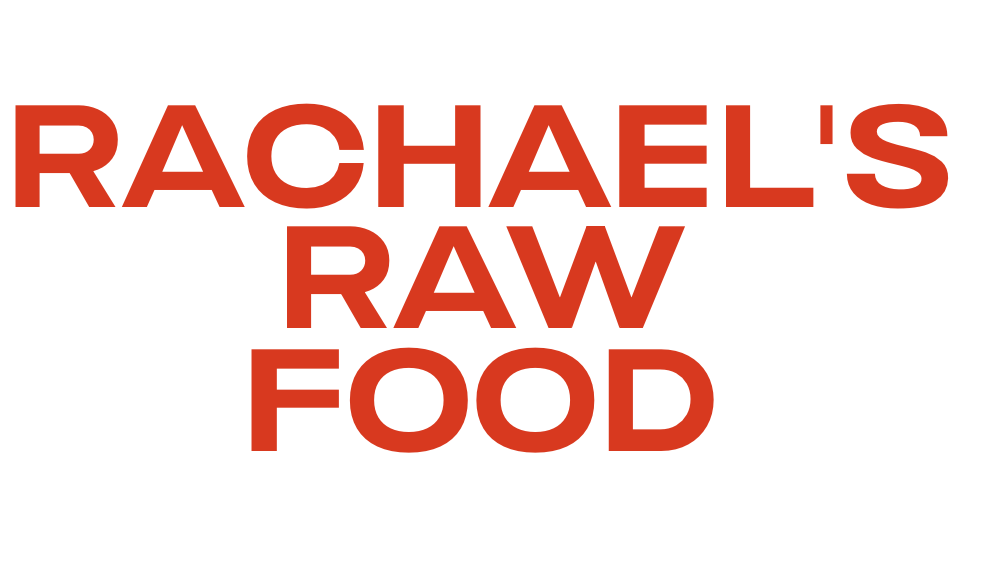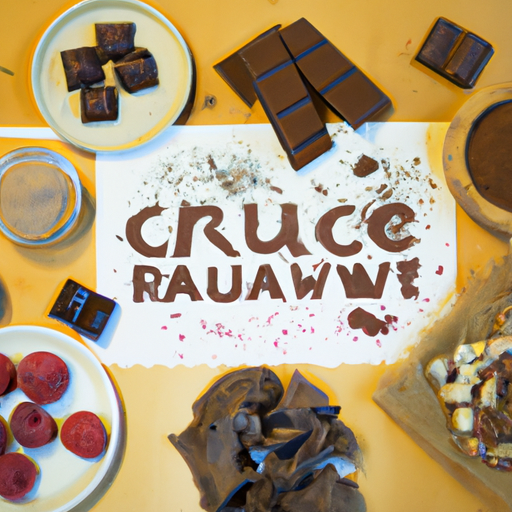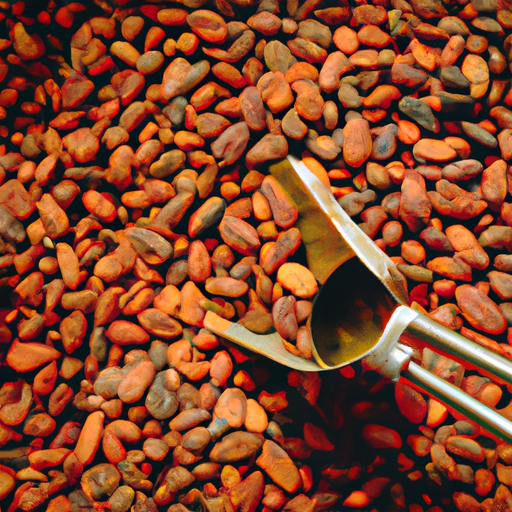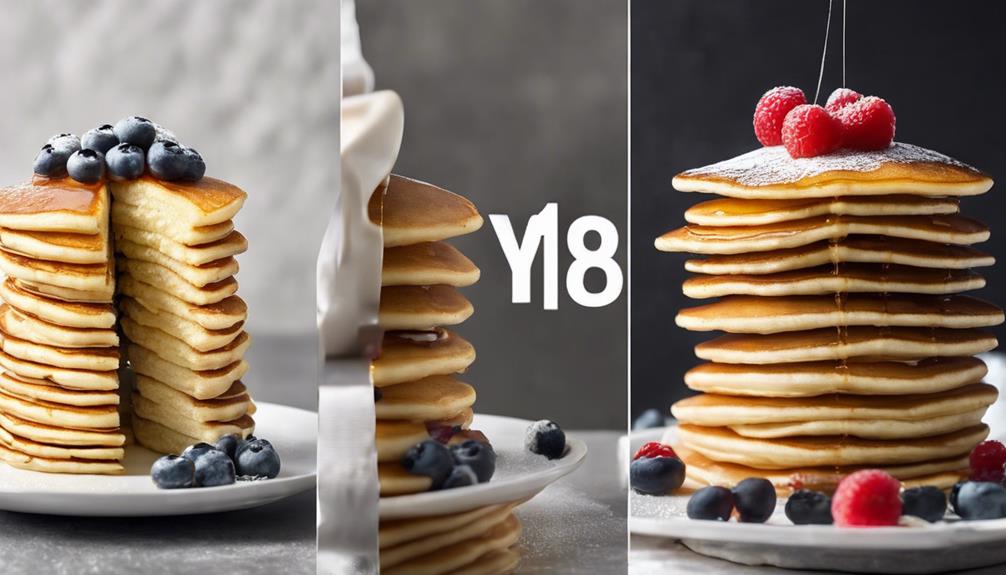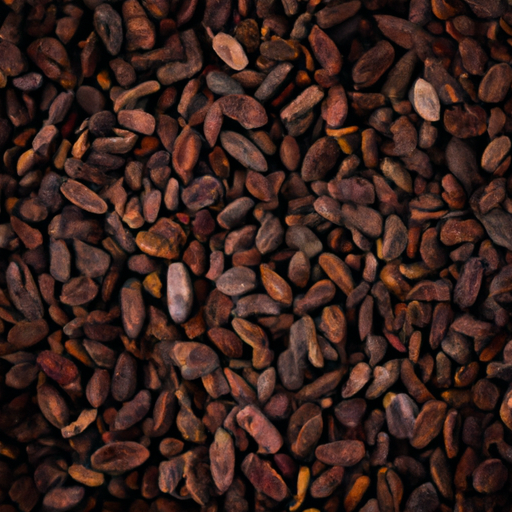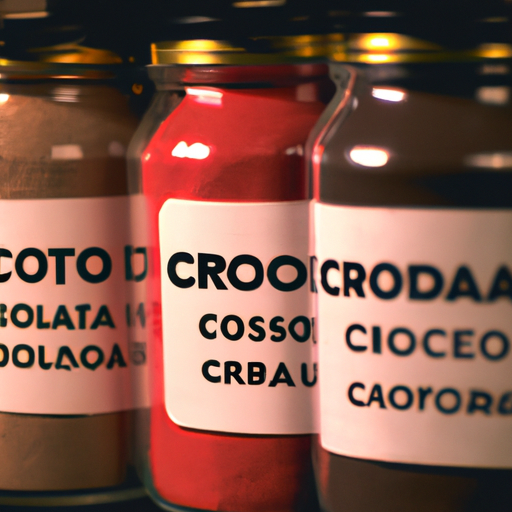I have definitely found myself enjoying a rich piece of chocolate and pondering how much is considered excessive.
As a chocolate lover myself, I have often pondered the question: how much raw cacao can you eat without overdoing it? Well, in this article, we will explore the origins of raw cacao, its nutritional benefits, and the recommended daily intake.
We will also delve into potential side effects of consuming too much raw cacao and discuss factors to consider when incorporating it into your diet. If you’re worried about going overboard, fear not! I will also share some delicious ways to enjoy raw cacao in moderation and provide alternative options for chocolate lovers.
So, grab a cup of hot cocoa and join me as we navigate the world of raw cacao and find the perfect balance for our chocolate cravings.
Key Takeaways
- Moderation is key when consuming raw cacao
- Portion control is important to satisfy cravings without overindulging
- Adjust intake based on individual tolerance
- Consult a healthcare professional for those with underlying health conditions
The Origins of Raw Cacao
The rich history and origins of raw cacao will amaze you, transporting you to a world of ancient civilizations and indulgent flavors.
Raw cacao has its roots in Central and South America. It was cultivated and consumed by the Mayans and Aztecs thousands of years ago. These ancient civilizations revered cacao and considered it a sacred food. They often used it in religious ceremonies and even as a form of currency.
The history of raw cacao is closely intertwined with the development of chocolate as we know it today. It was during the Spanish conquest of the Americas that cacao was introduced to Europe. Over time, it was transformed into the delicious treat we all love.
Now that you know the fascinating origins and history of raw cacao, let’s explore its nutritional benefits.
Nutritional Benefits of Raw Cacao
Indulging in the consumption of raw cacao can provide a multitude of nutritional benefits. Not only is it a delicious addition to recipes, but it also offers several health benefits.
Raw cacao is packed with antioxidants, which help to fight off free radicals and reduce inflammation in the body. It is also a great source of magnesium, iron, and fiber. These nutrients support cardiovascular health, improve digestion, and boost energy levels.
Additionally, raw cacao contains compounds that can enhance mood and promote mental well-being. Incorporating raw cacao into your diet can be as simple as adding it to smoothies, oatmeal, or homemade energy bars.
It’s important to note that while raw cacao offers many benefits, moderation is key. Now, let’s explore the recommended daily intake of raw cacao.
Recommended Daily Intake of Raw Cacao
To fully benefit from raw cacao, it’s recommended to enjoy a small square of this delicious treat each day. This allows the rich, velvety flavor to tantalize your taste buds and nourish your body. Here is the recommended daily intake of raw cacao:
-
Start with a small amount: Begin by consuming a quarter ounce (approximately 7 grams) of raw cacao per day.
-
Gradually increase the amount: Over time, you can increase your intake to half an ounce (approximately 14 grams) per day.
-
Stay within moderate limits: It’s generally advised not to exceed one ounce (approximately 28 grams) of raw cacao daily.
-
Listen to your body: Pay attention to how your body responds to the amount of raw cacao you consume and adjust accordingly.
Consuming raw cacao in moderation provides numerous health benefits, such as improved mood, enhanced cognitive function, and increased antioxidant intake. However, it’s important to be aware of potential side effects of consuming too much raw cacao, which will be discussed in the next section.
Potential Side Effects of Consuming Too Much Raw Cacao
As someone who loves indulging in raw cacao, it’s important to be aware of potential side effects that can arise from consuming too much.
One possible concern is caffeine sensitivity, as raw cacao contains a natural stimulant called theobromine which can affect those who are sensitive to caffeine.
Digestive issues may also occur, such as bloating or diarrhea, especially if consumed in large quantities.
Additionally, it’s crucial to consider potential interactions with medications, as raw cacao can interact with certain drugs, such as those for high blood pressure or antidepressants.
Caffeine Sensitivity
If you’re sensitive to caffeine, you might want to be mindful of how much raw cacao you consume. Raw cacao contains natural caffeine, which can affect individuals differently based on their sensitivity levels. For those with caffeine sensitivity, consuming excessive amounts of raw cacao may lead to various health effects such as increased heart rate, jitteriness, and restlessness. To better understand the potential impact of raw cacao on caffeine-sensitive individuals, let’s take a closer look at the table below:
| Caffeine Sensitivity Level | Recommended Raw Cacao Intake |
|---|---|
| Low | 1-2 tablespoons per day |
| Moderate | 1 tablespoon per day |
| High | 1 teaspoon per day |
Remember, these recommendations are general guidelines, and individual tolerance may vary. Now, let’s move on to the next section about digestive issues and how raw cacao may affect them.
Digestive Issues
Dealing with digestive issues? Don’t let concerns about potential discomfort prevent you from enjoying the rich and velvety goodness of raw cacao. While raw cacao contains digestive enzymes that can aid in the breakdown of food, it’s important to be mindful of your individual gut health.
Some individuals may experience digestive discomfort, such as bloating or diarrhea, when consuming larger amounts of raw cacao. If you’re unsure about your tolerance, start with smaller quantities and gradually increase as tolerated. Additionally, maintaining a balanced diet, staying hydrated, and incorporating fiber-rich foods can support healthy digestion.
It’s always best to listen to your body and consult with a healthcare professional if you have any concerns.
Moving on to interactions with medications, it’s important to be aware of how raw cacao may affect certain medications.
Interactions with Medications
When it comes to medications, it’s essential to be mindful of how raw cacao can potentially interact with them. Raw cacao contains certain compounds that can affect the way medications are broken down and metabolized in the body. It is particularly important to be cautious if you are taking medications that are metabolized by the liver, as raw cacao may interfere with their effectiveness. Additionally, raw cacao may interact with coffee and alcohol, leading to increased heart rate and blood pressure. To help you understand the potential interactions between raw cacao and medications, here is a table outlining some common medications and their potential interactions with raw cacao:
| Medication | Potential Interaction with Raw Cacao |
|---|---|
| Blood Thinners | Raw cacao may increase bleeding risk |
| Antidepressants | Raw cacao may enhance their effects |
| Antacids | Raw cacao may reduce their effectiveness |
Considering these potential interactions, it is important to consult with your healthcare provider before consuming raw cacao if you are taking any medications. Moving forward, let’s explore the factors to consider when consuming raw cacao.
Factors to Consider When Consuming Raw Cacao
One interesting statistic to consider is that consuming too much raw cacao can lead to increased heart rate and potentially cause heart palpitations.
While raw cacao is rich in antioxidants and can have various health benefits, it is important to be mindful of the quantity consumed.
Factors to consider include individual tolerance, existing health conditions, and potential drug interactions.
It is recommended to start with small amounts and gradually increase to gauge your body’s response.
Additionally, be cautious if you have a history of heart problems or are taking medications that may interact with cacao.
Monitoring your heart rate and consulting with a healthcare professional can help mitigate potential health risks.
Transitioning into the next section, there are delicious ways to incorporate raw cacao into your diet without overindulging.
Delicious Ways to Incorporate Raw Cacao into Your Diet
Try adding a sprinkle of this rich, chocolatey superfood to your morning smoothie or mixing it into your favorite homemade energy balls for a decadent and nutritious treat. Not only does raw cacao add a deliciously intense flavor to your creations, but it also offers numerous health benefits. When used in baking, raw cacao provides a natural sweetness without the need for excessive amounts of sugar. It is packed with antioxidants, which can help protect against free radicals and promote overall health. Additionally, raw cacao is a great source of magnesium, iron, and fiber. Looking for some smoothie inspiration? Try blending raw cacao with banana, almond milk, and a scoop of nut butter for a rich and creamy delight. In conclusion, incorporating raw cacao into your diet can be both delicious and beneficial for your health. Now, let’s explore alternative options for chocolate lovers.
Alternative Options for Chocolate Lovers
As a chocolate lover, I’m always on the lookout for alternative options that can satisfy my cravings. Dark chocolate is a great choice, as it contains a higher percentage of cacao and is lower in sugar compared to milk chocolate.
Cacao nibs and cacao powder are also excellent alternatives, providing a rich, chocolatey flavor while offering added health benefits.
Dark Chocolate
Indulge yourself in the rich decadence of dark chocolate and discover just how much raw cacao you can savor.
Dark chocolate is not only a delicious treat, but it also offers numerous health benefits. It contains a higher percentage of cacao compared to milk chocolate, making it a healthier option.
Dark chocolate is rich in antioxidants, which can help reduce the risk of heart disease and improve brain function. Additionally, it has been shown to lower blood pressure and improve insulin sensitivity.
There are also plenty of delicious dark chocolate recipes available, from chocolate-covered strawberries to dark chocolate bark.
So, go ahead and enjoy a piece of dark chocolate, knowing that it not only satisfies your sweet tooth but also provides health benefits.
Now, let’s transition to the next section and explore the world of cacao nibs.
Cacao Nibs
Get ready to experience the delightful crunch and intense flavor of cacao nibs, transporting your taste buds to a world of pure chocolate bliss.
Cacao nibs are small pieces of roasted cacao beans that are packed with health benefits. They are a rich source of antioxidants, which help protect your body against free radicals and reduce inflammation. Additionally, cacao nibs are high in fiber, iron, and magnesium, supporting digestion, energy production, and muscle function.
When it comes to incorporating cacao nibs into your diet, the possibilities are endless. You can sprinkle them on top of yogurt or smoothie bowls for a satisfying crunch, mix them into your favorite baked goods for a chocolatey twist, or even use them as a topping for desserts like ice cream or pudding.
Next, we’ll explore the benefits and uses of cacao powder, which is another versatile and nutritious form of cacao.
Cacao Powder
When it comes to incorporating cacao powder into your recipes, the options are truly endless. From smoothies and desserts to baked goods and hot drinks, cacao powder can add a rich and indulgent flavor to your favorite dishes. Not only does it taste delicious, but it also offers numerous health benefits. Cacao powder is packed with antioxidants, which can help reduce inflammation and protect against chronic diseases. It is also a good source of minerals like magnesium, iron, and zinc. To give you an idea of the versatility of cacao powder, here’s a table showcasing three delicious cacao recipes:
| Recipe | Ingredients | Instructions |
|---|---|---|
| Chocolate Smoothie | Cacao powder, banana, almond milk | Blend all ingredients until smooth. |
| Cacao Energy Balls | Cacao powder, dates, nuts | Mix all ingredients and form into balls. |
| Chocolate Oatmeal | Cacao powder, oats, milk | Cook oats with milk and stir in cacao powder. |
Finding balance and enjoying raw cacao in moderation is key to reaping its benefits without overindulging.
Finding Balance and Enjoying Raw Cacao in Moderation
To maintain a sense of balance and fully enjoy the benefits of raw cacao, you can safely incorporate a moderate amount into your diet. Here are some tips to help you find that balance and enjoy raw cacao in moderation:
-
Portion control: Enjoy a small serving of raw cacao, such as a tablespoon of cacao powder, to satisfy your chocolate cravings without going overboard.
-
Pair it with healthy foods: Mix cacao nibs into yogurt or sprinkle cacao powder on top of fruits for a nutritious and delicious treat.
-
Listen to your body: Pay attention to how raw cacao makes you feel. If you notice any negative effects, such as jitteriness or digestive discomfort, adjust your intake accordingly.
-
Be mindful of added sugars: Opt for raw cacao products that are minimally processed and avoid those with high amounts of added sugars to maximize the health benefits.
-
Consult a healthcare professional: If you have any underlying health conditions or concerns, it’s always a good idea to consult with a healthcare professional before making significant changes to your diet.
In conclusion, finding a balance and enjoying raw cacao in moderation can be a delightful way to incorporate this superfood into your diet.
Conclusion and Final Thoughts
In the end, striking a balance and savoring the occasional indulgence of raw cacao can truly enhance your overall well-being and bring a touch of decadence to your daily routine. While it’s important to enjoy raw cacao in moderation, there are also ways to find healthier alternatives and experiment with raw cacao recipes.
Table:
| Raw Cacao Recipes | Healthier Alternatives | Benefits |
|---|---|---|
| Raw cacao smoothie | Use almond milk | Rich in antioxidants |
| Raw cacao energy balls | Replace sugar with dates | Provides a natural energy boost |
| Raw cacao oatmeal | Add fresh fruits | High in fiber and vitamins |
| Raw cacao avocado mousse | Use coconut cream | Healthy fats for brain health |
Finding healthier alternatives allows you to enjoy the benefits of raw cacao without overindulging. Experimenting with raw cacao recipes can be a fun way to incorporate this delicious ingredient into your diet while exploring new flavors and textures. Remember, moderation is key, so savor your raw cacao treats and reap the rewards of this nutritious and indulgent ingredient.
Frequently Asked Questions
Can raw cacao be consumed by individuals with certain dietary restrictions or allergies?
Individuals with digestive issues may experience discomfort after consuming raw cacao. Those with gluten intolerance should also be cautious, as raw cacao may be processed in facilities that handle gluten-containing products.
Are there any age restrictions for consuming raw cacao?
Consuming raw cacao is like adding fuel to my body’s engine. There are no age restrictions for enjoying its health benefits. It boosts energy, improves mood, and provides essential nutrients for people of all ages.
Can raw cacao be used as a substitute for regular cocoa powder in recipes?
Raw cacao can be used as a substitute for cocoa powder in recipes. It offers more health benefits, like higher antioxidant content and lower sugar levels. Additionally, raw cacao has a more intense and bittersweet flavor compared to regular cocoa powder.
Is there a difference in the nutritional content between raw cacao and processed chocolate products?
There is a difference in the nutritional content between raw cacao and processed chocolate products. Raw cacao retains more antioxidants due to minimal processing, providing greater health benefits compared to processed chocolate products.
How does the caffeine content in raw cacao compare to other sources of caffeine?
The caffeine content in raw cacao is lower compared to other sources of caffeine like coffee or energy drinks. However, it can still have stimulant effects on the body, especially for individuals who are caffeine sensitive.
Is the Cost of Raw Cacao from the Dominican Republic Worth the Health Benefits?
When considering the raw cacao price in the Dominican Republic, it is important to weigh the potential health benefits. The cost may be worth it for those seeking the antioxidant and nutrient-rich qualities of high-quality raw cacao. Investing in this premium ingredient could lead to improved overall wellbeing.
Conclusion
In conclusion, indulging in the rich and decadent world of raw cacao is like embarking on a delightful adventure for your taste buds and well-being. Just like a delicate dance of flavors, it is important to find the perfect balance.
Remember, moderation is key when savoring the velvety goodness of raw cacao. Let it be the sprinkle of magic in your daily routine, enhancing your health and bringing joy to your soul.
So go ahead, embrace the blissful symphony of raw cacao and let it transport you to a world of pure delight.
